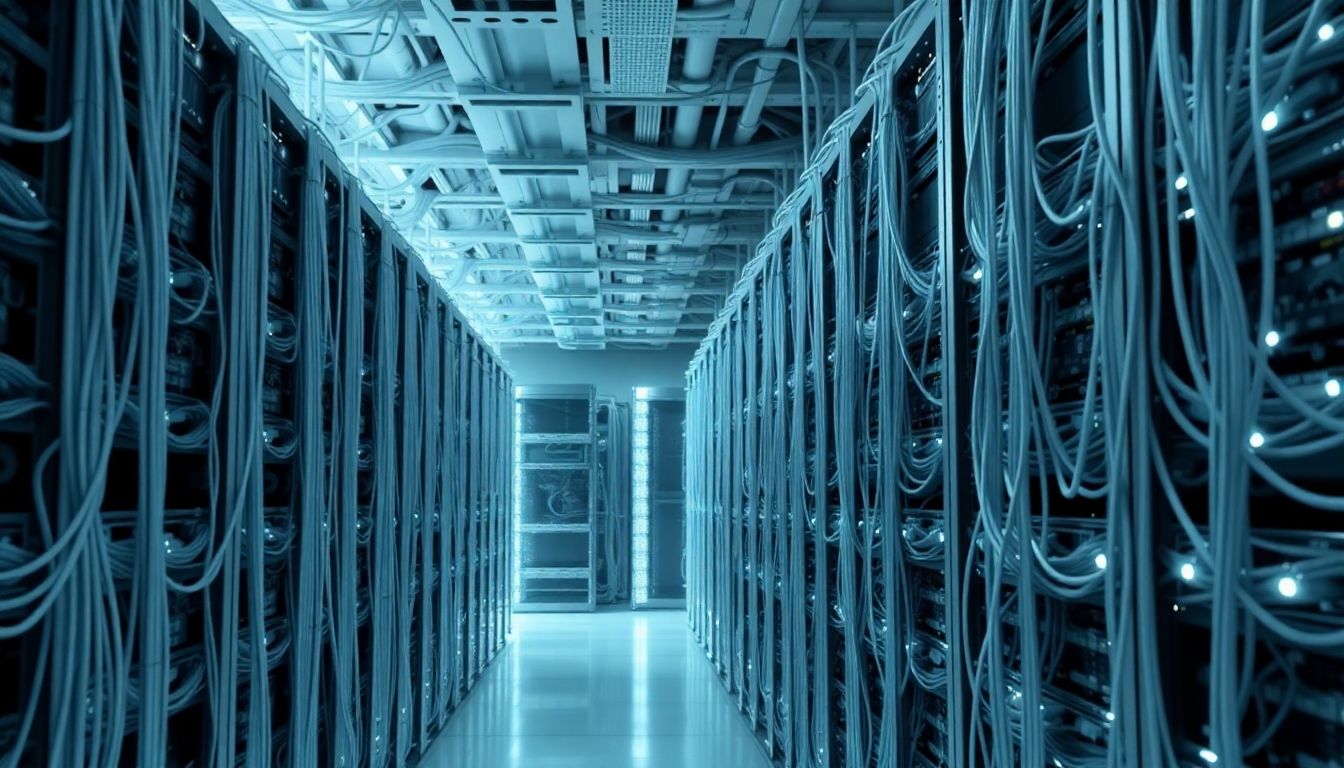
IT Infrastructure: The Backbone of Modern Business
Did you know downtime can cost businesses thousands of dollars every minute? IT infrastructure is what keeps your business running. Without it, you're dead in the water. It's the foundation for pretty much everything. Your business uses it to stay competitive. It's made up of all the hardware, software, and networks that keep things humming. Let's jump in and check out what it's all about.
Understanding the Core Components of IT Infrastructure
IT infrastructure is the engine of modern business. It includes everything from servers to software. All of this works to make sure data flows properly. Let's check out each part so that you have a better understanding.
Hardware
Hardware is the physical stuff. It's what you can touch. Think of it as the bones of your IT setup.
- Servers: These are the workhorses. They store data and run apps. You have file servers, web servers, and database servers. Each does its own job.
- Desktops and Laptops: These are what your employees use every day. It's how they access data. It's also how they do their work.
- Data Centers: These are buildings that hold lots of servers. Some companies have their own on-site. Others rent space in a colocation center.
Software
Software is the brains of the operation. It tells the hardware what to do. Without it, your hardware is just a paperweight.
- Operating Systems: Windows, Linux, and macOS are a few. This manages hardware and software resources. It's like the air traffic controller for your computer.
- Middleware: This acts as a translator between different applications. It lets them talk to each other.
- Enterprise Resource Planning (ERP) Systems: These help manage business processes. They cover accounting, HR, and supply chain.
Networking
Networking is how everything connects. It lets data flow. It is key to communication and collaboration.
- Routers and Switches: These direct traffic on your network. Routers connect different networks. Switches connect devices within a network.
- Firewalls and Security Appliances: These protect your network from threats. They're like bouncers for your data.
- Wide Area Networks (WANs) and Local Area Networks (LANs): LANs connect devices in a small area, like an office. WANs connect networks over a large area.
IT Infrastructure Management: Ensuring Optimal Performance
Managing IT infrastructure is key. It keeps things running smoothly. Think of it as taking care of your car to avoid breakdowns.
Monitoring and Maintenance
You need to keep an eye on things. That is how you catch problems early. Regular maintenance prevents headaches.
- Performance Monitoring Tools: These track how your systems are doing. You can spot bottlenecks and fix them.
- Preventive Maintenance Schedules: Regular checkups for your hardware and software are important. This keeps everything in good shape.
Security Management
Security is not something to ignore. You need to protect your data. Threats are always evolving, so you have to also.
- Vulnerability Assessments: These find weak spots in your systems. It's like a security checkup.
- Intrusion Detection and Prevention Systems (IDS/IPS): These watch for bad stuff. They block attacks.
Capacity Planning
You should know what you'll need in the future. Then you can be ready for growth. Nobody wants their systems to crash when they get popular.
- Predicting Future Needs: Look at trends. Plan for more users and data.
- Scaling Resources: Add more servers or bandwidth as needed. Cloud computing makes this easy.
Modernizing IT Infrastructure: Embracing Cloud and Automation
The future of IT infrastructure is here. Cloud and automation are changing things. They make things more flexible and efficient.
Cloud Computing
Cloud computing is a game changer. You can access resources over the internet. This can save you money. It also gives you flexibility.
- Infrastructure as a Service (IaaS): You rent servers and storage. You manage the operating systems and apps.
- Platform as a Service (PaaS): You get a platform to build and run apps. The provider handles the infrastructure.
Automation
Automation is the process of making things work automatically. It can save you time. It also reduces errors.
- Infrastructure as Code (IaC): You use code to manage your infrastructure. This makes it repeatable and consistent.
- Configuration Management Tools: Tools like Ansible and Puppet automate setup. It also automates software deployment.
IT Infrastructure and Business Strategy: Aligning Technology with Goals
IT infrastructure isn't just about tech. It's about reaching business goals. The two must work together for success.
Supporting Business Objectives
Your IT should help you achieve your business goals. It should not be a roadblock. When it works well, business succeeds.
- Improving Efficiency and Productivity: Streamline processes. Automate tasks.
- Enabling Digital Transformation: Use tech to change how you do business. This could mean new products or new ways to reach customers.
Disaster Recovery and Business Continuity
Stuff happens. You need a plan to deal with it. A disaster recovery plan can save your business.
- Backup and Recovery Strategies: Back up your data regularly. Have a plan to restore it quickly.
- Redundancy and Failover Mechanisms: Have backup systems that kick in if the main ones fail.
Conclusion
A solid IT infrastructure is key for success. It needs to be well-designed. It must be carefully managed. Make sure your IT lines up with your business goals. Is your current IT setup up to snuff? Are there areas you could make it better? Take a look and see. It could be the best thing you do for your business this year.